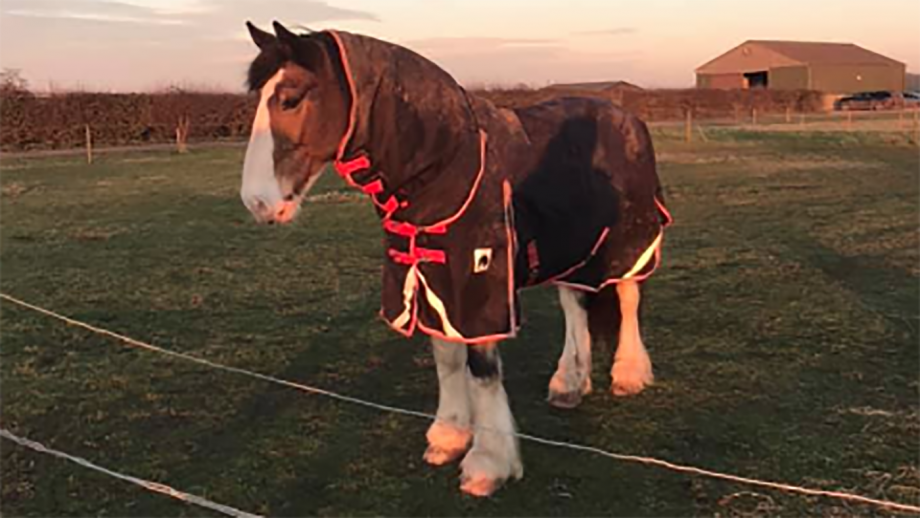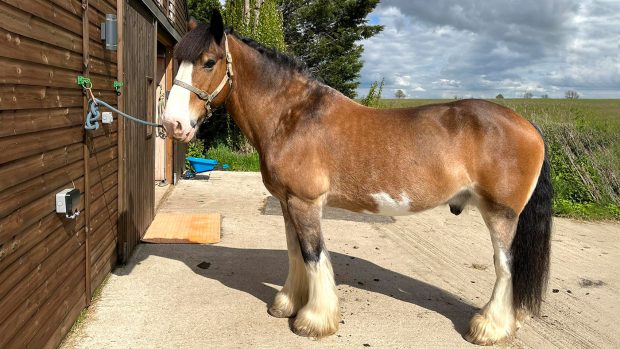Dear diary,
It’s day 5,569 of the human strangles epidemic. Across the land, serious debate is raging among professionals, with many questions taking centre stage. Questions such as:
What constitutes “in-hand walking”: if my human gets a tad overexcited and breaks into a trot between the sofa and the fridge, does that count as their once a day exercise?
Is the use of a grazing muzzle to prevent over-foraging a breach of human rights and is this counter-balanced by the equine rights of not being mounted by a 72 stone cookie monster when this is all over?
Should stud activities still be allowed or is only AI permitted? Is the sale of turkey basters therefore classed as an essential item?
Will toilet roll hoarding be soon classified as a recognised “vice” and what impact will that have on me finding my human a new stable?
It’s not just us equines who have questions. Since my informative article last week, I have been contacted by many canines and felines, who are wanting to discuss employment rights, as well as the terms and conditions regarding their new conscripted role as CFOs (Chief Fun Officers). Many feel that the lack of choice in the role as well as a poorly defined job role description is causing undue stress.
Only yesterday Barney the Boxer from Barnsley emailed me perplexed as to why he was on a disciplinary, with biscuit rights revoked, after proudly dropping his mother’s hitherto discarded knickers onto her laptop during a video conference call. I am currently arranging union representation for Chewy the Chihuahua from Chigwell, who was fired following excessive fornication of his father’s left leg during an online job interview; a case of unfair dismissal if I ever I saw one — he was merely giving him material for the inevitable questions regarding overcoming diversity, dealing with stressful situations and the approach taken by the interviewee to dealing with diversity…
I’m hoping that my tips last week on dealing with box resting your humans have helped, but today in part two of my series, I am going to turn my attention to the return to work period and how to ensure that you have this planned effectively for when the time comes to release the beasts.
Firstly we should all recognise that after a period of box rest, no matter how fit the human was beforehand, they will now have lost all condition and stamina — we’re starting at ground zero again, so we need to be strict in how we deal with this.
Weight gain
If you have followed my previous guidance and not allowed the over-use of PJ-type rugs, then condition scoring your human should have been easy. What will not have been so easy is to prise the cookie out of their mouths, unless you did manage to utilise a good quality grazing muzzle (or gaffer tape). As a result, allowances need to be made for this when considering reintroducing tack of any form. Trousers with elastic waist bands may be a good investment to prevent any airs above ground from the mares of the herd if tack such as the “skinny jean” is re-introduced too early.
Feet
Farriery will have been problematic during this lockdown period, so attention should be paid to this aspect before allowing your human out in public. Many of you will have heeded advice and removed shoes for ease of maintenance, so remember months barefoot or in soft slipper stable boots will mean feet will have splayed and got fatter (much like the rest of the body), so again think about gradual re-introduction to normal working shoes. A human mare discovering she is unable to wear the usual Manolo Blahnik is dangerous and prior sedation should be considered prudent. In the case of geldings, please consider liberal application of a rasp to remove excessive toenail growth before allowing any form of public appearance, even in a hoof boot or “flip flop” — no one needs to see that…
Re-introduction of exercise
If you have been able to utilise a home-made human walker (rotary washing line with liberal use of nose rings are ideal), or have a human who has been able to survive past day one of the “Joe Wicks” without permanent lameness or loss of use, then the return to work can skip stage one and move straight to stage two. For those of you who have humans whose idea of physical movement has been the movement of food stuffs or liquid from table to mouth, then I would strongly recommend appropriate time is spent on stage one first to avoid injury (stitch from laughing at hobbling humans is a very real danger — don’t say I didn’t warn you).
Stage one: lungeing
This will allow you to work the human with minimal tack and thus permit more fluid movement. An exercise sheet should be used however to protect your eyes from any free-moving appendages wafting gaily in the breeze; no one needs a black eye from bouncing boobage or worse…
Think about how your human lunges you and pick a level surface with good space. Attach the human to a suitable rope or lunge line and waft something vaguely threatening at their rear end — I find here a carrot or other suitable cylindrical vegetable works well. I’m not sure if it’s the thought of being in close proximity to something healthy that has them scuttling forwards like crabs from a sushi joint, but it does ensure impetus. Now, the text books will tell you to lunge your human lightly and to stop if they start exhibiting signs of tiredness such as tripping, breaking into a sweat or no longer being willing to move forward, but to be honest with you, after weeks of doing nothing more strenuous than dipping a digestive in their tea, that’s going to be about 1.5 minutes, so to be frank, lunge the lazy buggers until they’re asking to do Joe Wicks instead…
Stage two: Long reining
Now this is useful in three situations — where your human has no concept of a circle (predominantly an issue seen in mares), where your human is fitter and thus can go for longer, or where joint problems mean circles cause more groaning than in a prawn movie. Long reining, if used correctly, can ensure that the human builds up fitness without the impediment of carrying its usual load (such as a laptop or for those with enough bone to cope, a ladies’ handbag). Attach two lines to your human and use an encouraging word to get them to move forward: “pub” usually works… Don’t forget the human hasn’t been exercised for a while and may be rather excited at the prospect — a good bit and a firm hoof may be required…
Article continues below…
You might also be interested in:

Hovis’ Friday diary: my advice on how to handle your human while they’re on box rest…
Hovis offers guidance for his fellow equines, who might need to take care of their humans at the moment

Subscribe to Horse & Hound this spring for great savings
As stated before, at all times if behaviour becomes intolerable then resort to liberal quantities of calmer or dope, if you can get it prescribed — whether you use it on your human or yourself, is entirely up to you. In the meantime, remember my message: the spring grass is coming through now, so in order for you all not to be on box rest yourselves with the dreaded laminitis then just calm down the scoffing — remember the simple saying “the grass goes on the ass — it might be the best but you’ll end up with a crest”.
Stay safe and sane — and remember there’s no problem in life that can’t be fixed with gaffer tape — apart from stupid.
Laters,
Hovis
We continue to publish Horse & Hound magazine weekly during the coronavirus pandemic, as well as keeping horseandhound.co.uk up to date with all the breaking news, features and more. Click here for info about magazine subscriptions (six issues for £6) and access to our premium H&H Plus content online.




